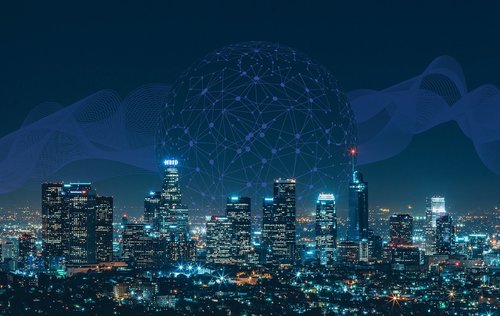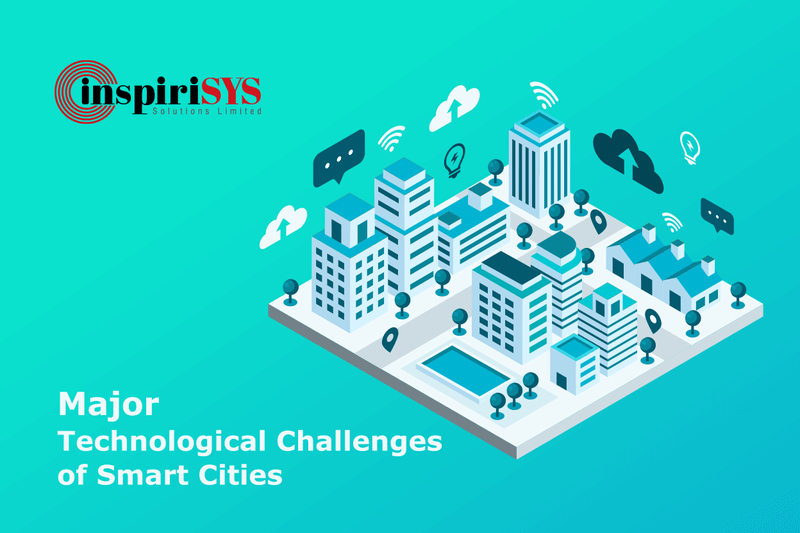Being smart is no longer a choice. It’s a necessity for effective and efficient management. Smart cities are the next ray of hope for the citizens and the government to enhance citizen well-being, sustainability, and economic development by leveraging information & technology. To take a case in point, global smart city spending is expected to reach 34.35bn USD in 2020. While smart city initiates are ramping up, the process to make existing smart cities even smarter with smart governance, smart health, smart metering for electricity & water and intelligent transportation, is on the action. Above all, the technological challenges are growing rapidly with the complexity of smart cities. From infrastructure to security, smart city implementations face myriad challenges and risks. Here are the top technological challenges of smart cities.
Cyber Security
 Connectedness is the base of smart cities. The architecture of having all systems under one roof has its own advantage and disadvantage. Sneaking into a wider surface like this is as easy as losing a needle in a haystack. Web & mobile apps, connected homes, and connected cars are generating a massive amount of data. Everything needs to be in a perfect secure line. Any kind of flaws on the line could open the door of cyber-attacks. As people experience new and innovative technologies in smart cities, they should be prepared to anticipate new and innovative ways of being attacked.
Connectedness is the base of smart cities. The architecture of having all systems under one roof has its own advantage and disadvantage. Sneaking into a wider surface like this is as easy as losing a needle in a haystack. Web & mobile apps, connected homes, and connected cars are generating a massive amount of data. Everything needs to be in a perfect secure line. Any kind of flaws on the line could open the door of cyber-attacks. As people experience new and innovative technologies in smart cities, they should be prepared to anticipate new and innovative ways of being attacked.
Most of the time, the integration of new technologies with legacy systems of the city, creates holes in the security perimeter. Until the system is completely modernized, the vulnerabilities serve attackers to exploit. Some common attacks smart cities face are:
Data and identity theft
An unprotected smart city infrastructure enables attackers to steal Personally Identifiable Information (PII). It can be used in fraudulent transactions.
Device Hijacking
As the name implies, it involves, hijacking an endpoint device. For instance, smart meters can be hijacked to siphon energy from a municipality.
Man-in-the-Middle
A cybercriminal can get in between a computer and a server to spy. In a real case scenario, a smart water management system can be attacked using this approach to disrupt the operation.
Cybersecurity is not a onetime implementation. When it comes to larger infrastructure like smart cities, it requires periodic security assessments like penetration testing to ensure the resilience capacity of the system for emerging cyber threats.
Infrastructure
Legacy Infrastructure
Modernizing a legacy infrastructure has not been an easy task. A city infrastructure includes transportation, sanitation, water supplies, waste disposal, and telecommunication. It is challenging to replace decades-old infrastructures like underground wiring, steam pipes, and transportation tunnels. It requires clear documentation of systems to craft a strategy. But most of the legacy systems were not documented to facilitate the modernization. This results in increased project timeline and cost.
Uninterrupted Connectivity
Smart cities are equipped with connected devices. These devices need instance response for uninterrupted operations. Any kind of delay in information may lead to disruption. So long term connectivity and uninterrupted data flow are crucial for smart city infrastructure. To get a deeper look at the adverse effect of poor connectivity, think what if there is a delay in the function of traffic signals. Disaster right? To ensure uninterrupted connectivity, operators must provide coverage and capacity solutions to multiple sites across a city.
Multi-Vendor Environment
The components of smart city infrastructures are supplied by different vendors. The ability to handle complex combinations of smart city solutions developed by multiple technology vendors becomes crucial. Most of the time, a system provided by one vendor won’t be compatible with another system provided by another vendor. This compatibility issues between multiple vendors is a common challenge in smart city implementation.
How ISL can help to overcome the challenges?
ISL Enterprise Security & Risk Services combat smart city cyber threats including Data and identity theft, Device Hijacking and Man-in-the-Middle attack. Some of our enterprise security solutions that can fortify smart cities are
Inspirisys is an end-to-end infra service provider, offering the much-needed experience, talent and tools to create, run, and manage next-generation IT architecture. Our holistic infrastructure solutions can help to overcome the multi-vendor complications in smart city implementation. With proven successful implementations of legacy data migration, we ensure system agility and increased speed-to-market.







